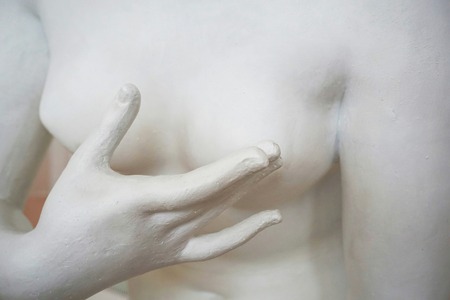
Mastitis is an infection of the breast tissue that often affects breastfeeding women, although it can also occur in women who are not nursing and in men. It can cause pain, swelling, redness, and sometimes flu-like symptoms. Prompt and proper management of mastitis is essential to prevent complications and ensure optimal healing. In this article, we will explore the causes of mastitis, signs and symptoms, treatment options, and prevention strategies.
Table of Contents
- What is Mastitis?
- Causes of Mastitis
- Symptoms of Mastitis
- Diagnosis of Mastitis
- Treatment of Mastitis
- 1. Antibiotics
- 2. Pain Relief
- 3. Breastfeeding or Pumping
- 4. Warm Compresses
- 5. Massage
- 6. Rest and Hydration
- 7. Abscess Drainage
- Preventing Mastitis
- 1. Proper Latching Techniques
- 2. Frequent Breastfeeding or Pumping
- 3. Avoid Tight Bras
- 4. Massage and Warm Compresses
- 5. Maintain Good Hygiene
- 6. Treat Cracked Nipples Promptly
- Conclusion
What is Mastitis?
Mastitis is the inflammation of breast tissue, typically caused by a bacterial infection. It often occurs when bacteria enter the breast tissue through a cracked or sore nipple, leading to an infection in the milk ducts. While most commonly seen in breastfeeding women, mastitis can also occur in women who are not nursing or in men.
The condition can range from mild to severe, and untreated mastitis can lead to abscess formation, which may require surgical intervention. Prompt treatment is crucial to prevent these complications.
Causes of Mastitis
Mastitis is usually caused by bacteria that enter the breast through the nipple. The most common bacteria responsible for the infection are Staphylococcus aureus and Streptococcus species. These bacteria can thrive in the milk ducts, especially when milk is trapped due to incomplete drainage during breastfeeding or engorgement.
Factors that increase the risk of developing mastitis include:
- Cracked or sore nipples: Common in the early stages of breastfeeding when the baby has not yet latched properly.
- Engorgement: When the breasts become overly full, leading to blocked milk ducts.
- Infrequent breastfeeding or pumping: Missing feedings or not fully emptying the breasts can cause milk to back up in the ducts.
- Tight clothing or bras: Wearing constrictive bras can compress the breasts, leading to blocked ducts.
- Weakened immune system: Women with compromised immune systems may be more prone to infections.
Symptoms of Mastitis
The symptoms of mastitis can vary from mild to severe. Common signs to look out for include:
- Breast pain: A red, swollen, and painful area of the breast, often with a feeling of warmth.
- Fever and chills: An elevated temperature is common in the early stages of infection.
- Flu-like symptoms: Fatigue, muscle aches, and chills may accompany the infection.
- Engorgement or a lump: Swelling, tightness, and discomfort in the affected breast, with possible hard lumps in the breast tissue.
- Nipple discharge: In some cases, there may be pus or blood coming from the nipple.
- Redness: A red or pink patch on the breast where the infection is located.
Diagnosis of Mastitis
To diagnose mastitis, a healthcare provider will typically perform a physical exam, asking about the patient’s symptoms and medical history. In some cases, additional tests may be required to rule out other conditions, such as breast cancer or abscesses. If necessary, a breast ultrasound may be done to identify an abscess or to confirm the presence of infection.
Treatment of Mastitis
Effective management of mastitis involves both medical treatments and self-care strategies. Early intervention is important to prevent the infection from worsening or developing into an abscess. Here are common treatment options:
1. Antibiotics
- If mastitis is caused by a bacterial infection, antibiotics are typically prescribed to eliminate the infection. It is essential to take the full course of antibiotics, even if symptoms improve before finishing the medication. This ensures that the infection is fully treated and reduces the risk of it returning.
2. Pain Relief
- Over-the-counter pain relievers like ibuprofen or acetaminophen can help manage pain and reduce inflammation. These medications can also help reduce fever and flu-like symptoms associated with mastitis.
3. Breastfeeding or Pumping
- Continuing to breastfeed or pump is vital for clearing blocked milk ducts. In fact, frequent emptying of the breast can help reduce swelling and relieve pain. If breastfeeding is too painful, try to pump milk regularly until symptoms improve.
- Proper breastfeeding techniques, such as ensuring the baby is correctly latched, can prevent further nipple damage.
4. Warm Compresses
- Applying warm compresses to the affected breast can help ease discomfort, reduce swelling, and encourage milk flow. This can be done several times a day for relief.
5. Massage
- Gently massaging the affected area can help loosen up the blockage in the milk ducts. It can be beneficial to do this while breastfeeding or pumping to help the milk flow.
6. Rest and Hydration
- Adequate rest and hydration are essential for recovery. Drinking plenty of fluids, staying well-rested, and eating nutritious meals can support your immune system and help your body fight the infection.
7. Abscess Drainage
- If an abscess forms (a pocket of pus), it may need to be drained by a healthcare provider. This is typically done through a small incision. In some cases, the abscess may need to be drained repeatedly, or the doctor may recommend stopping breastfeeding on the affected side temporarily.
Preventing Mastitis
While not all cases of mastitis can be prevented, several strategies can help reduce the risk:
1. Proper Latching Techniques
- Ensure that the baby is latching correctly during breastfeeding. This can prevent nipple trauma and ensure milk flows efficiently from the breast, reducing the risk of blocked ducts.
2. Frequent Breastfeeding or Pumping
- Try to breastfeed or pump frequently, particularly in the early stages of breastfeeding. This helps prevent engorgement and blocked ducts. If you’re unable to breastfeed for any reason, try to pump regularly to maintain milk flow.
3. Avoid Tight Bras
- Wearing tight bras or clothing can put pressure on the breasts, leading to blocked ducts. Opt for a well-fitted, supportive bra that isn’t too tight.
4. Massage and Warm Compresses
- Massaging the breast and using warm compresses before and during breastfeeding or pumping can help prevent blocked ducts.
5. Maintain Good Hygiene
- Regularly wash your hands and ensure that your breasts and nipples are clean. Use gentle, fragrance-free soaps to avoid irritating the skin, which can increase the risk of infection.
6. Treat Cracked Nipples Promptly
- If you experience cracked or sore nipples, treat them immediately to prevent bacteria from entering and causing an infection. Use nipple creams or lanolin ointments to soothe the skin.
Conclusion
Mastitis is a painful condition, but with proper management, it can be treated effectively. Early diagnosis, appropriate use of antibiotics, and maintaining regular breastfeeding or pumping are crucial for recovery. Additionally, implementing preventive measures such as proper latching, frequent milk removal, and self-care can reduce the risk of mastitis in the future. If you experience symptoms of mastitis, it’s important to seek medical advice promptly to prevent complications and ensure the best possible recovery.
4o mini






